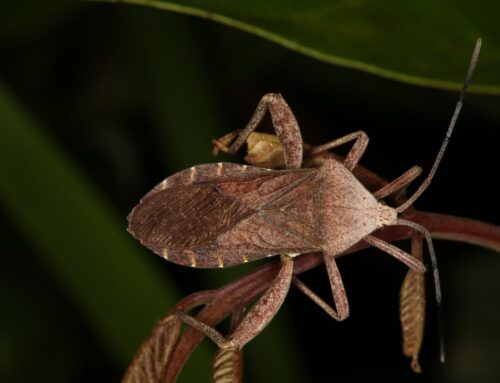Cambodia-Korea Joint REDD+ Project (Tumring REDD+ Project – TRP) – Key millstones achieved from Jan 2015 – Dec 2019
Importance of the Project Area
- Protecting 67,791 hectares of high conservation value tropical forests
- Supporting to about 250,000 indigenous peoples and local communities both directly and indirectly.

Villagers participated in a dissemination workshop on REDD+.
Main Drivers of Deforestation in the project area
- Small–scale forest land conversions
- Illegal forest logging
- Collecting fuel-wood, and
- Forest fires

A forest area cleared by forest offenders in O’ Kranhoung CF.
Project Teams and Partners
- Forestry Administration’s Project Management Unit contains officers who work on international relations, community development and administration and finance.
- Kompong Thom’s Department of Agriculture, Forestry and Fisheries works as a sub-contractor for the TRP and is responsible for providing supports on agricultural techniques to improve agricultural productions.
- Kompong Thom’s Department of Land Management, Urban Planning and Contraction supports community forest land registration
- Forest Law Enforcement Unit consists of local FA officers who assist community forestry groups to combat forest offenses.
- 14 Community Patrol Teams are members of community forestry groups who patrol across their respective community forestry boundaries to combat illegal forestry incidence.
- Actions for Development works as a project sub-contractor who facilitates processes to establish Agricultural Cooperatives to create market links for communities in the project area.

Project members coming from different walks of life have joined the project.
Strategic Actions to Address Drivers of Deforestation
Strengthening forest land tenure security: provided supports to demarcate and legalize 13 community forestry groups covering an area of 19,731 ha.
- 500 CF-border signboards
- 12 CF agreements
- 14 Community Information boards
- 399 plots of agricultural land covering an area of 1,160.08 ha in 10 community forestry
- 10 community forestry outposts

A community forestry outpost stands at the border of O’ Bosleav CF.
Enforcing forest law and improve governance: conducted regular forest law enforcement activities and information dissemination as well as collecting, monitoring and reporting illegal forest activities data.
- 141 chainsaws
- 45 CF members trained and GPSs provided
- 436 patrols
- 479 snares removed
- 339 clearing and logging incidents
- 44 charcoal kilns dismantled
- 443 trees confiscated 3,449 ha forest cleared

A law enforcement team containing members from forestry administration, district council and local authority rooted up cashew seedlings, illegally planted on Sochet CF’s area.
Improving communities’ livelihoods: supported deforestation-free agricultural commodity production, community-based resin enterprise value chain, community-based eco-charcoal enterprise, and community-based forest conservation micro-grants.
- 03 with drum-seeders, 14 with composting sites, 3 cassava demonstration plots, and 5 demonstration plots of climate resistant rice variety
- 02 Agricultural Cooperatives, and support their operational plan
- 5 ton of agricultural organic fertilizer provided to 75 community households
- 01 forest conservation based micro-finance
- 01 community-based resin enterprise

Samaki Mean Rith Agricultural Cooperative were interviewed and visited by a verification team.
Increasing stakeholder participation and environmental education: built capacity of community groups, community forest management committees, and relevant stakeholders by providing ongoing awareness-raising activities on forest conservation and its benefits.
- 44 agricultural extension workshops
- 1,220 members of the CFs trained
- 2000 posters on benefits from REDD+ implementation, and 100 leaflets
- One 11-minute-REDD+ video
- 03 REDD+ case studies
- 01 website

An information brief assessing Samaki Meanrith AC regarding its role in reducing deforestation rate.
Implementing accurate project monitoring platform: conducted forest plot inventory and satellite image analysis of carbon stock.
- Forest, biodiversity and social monitoring activities have been active
- 128 permanent sample plots set up
- A monitoring framework has been developed

A carbon inventory team member measured a diameter at breast height of a tree in the project area.
Forest Carbon, Community Development and Forest Biodiversity Conservation
Forest Carbon Benefits: generating a net emission reduction of 645,410 tons CO2e over the monitoring period of January 2015 to December 2019.

Inventory team members and a verification specialist verified ways to measure a tree.
Community Development Benefits: providing both direct and indirect benefits to 2,526 families living in 3 communes and 17 villages.

Community members received organic fertilizers from the project through department of agriculture.
Forest Biodiversity Benefits: The TRP is conserving 59 bird species, 23 mammal species and 03 species of reptile, among them 02 birds and 09 mammal species are listed in the IUCN red list. The TRP is also protecting more than 126 tree species.

The project has protected forest areas and wildlife across the project site.
Private Sectors and Carbon Offsetting through REDD+ Projects
- A carbon offset is a reduction in emissions of carbon dioxide or other greenhouse gases made to compensate for emissions made elsewhere.
- Offsets are measured in tons of carbon dioxide-equivalent (CO2e).
- In voluntary carbon market, individuals or companies purchase carbon offsets to mitigate their own greenhouse gas emissions from transportation, electricity use, and other sources. For example, a company might purchase carbon offsets to compensate for the greenhouse gas emissions caused by its investment.
- Purchasing carbon credits is not only offsetting a company’s carbon emissions but also supports communities’ livelihood development activities and conserves their forests and biodiversity.
- Income received from selling carbon credits will be used to enable a rage of livelihood activities, including increasing agricultural productions, developing non-timber forest products, and varying agricultural markets through agricultural cooperatives.
- A proportion of budget will also be used in forest conservation. Community members supported by this budget can widely and effectively patrol and monitor forests and wildlife in the project area.







Leave A Comment